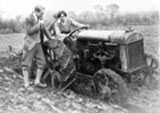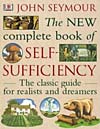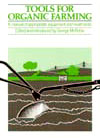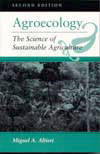
![]()
Search the Journey to Forever website – click HERE
|
Journey to Forever: Make a donation |
Navigation
| Small farms library | |
| City farms | |
| Organic gardening | |
| Composting | |
| Small farms | |
| Introduction Sustainable farming Small farms fit References |
|
| Small farm resources | |
| Back to the land | |
| Small farms | |
| Organics | |
| Soil management | |
| Sustainable farming | |
| General resources | |
| Food storage and preservation | |
| Useful databases | |
| Community-supported farms | |
| Farming with trees | |
| Agroforestry Bamboo Resources |
|
| Farming with animals | |
| Introduction Livestock resources Cattle Sheep General Draft animals |
|
| Pasture | |
| Introduction Pasture resources Silage |
|
| Pigs for small farms | |
| Why pigs have snouts Raising pigs on soil in Japan Lady Eve's pigs Pigs on pasture Pig resources |
|
| Poultry for small farms | |
| Muscovy ducks Khaki Campbell ducks Chickens Geese Rabbits Guineafowl General tips High-protein poultry feed from thin air Poultry as unpaid labour They're not pets Doing it |
|
| Poultry resources | |
| Aquaculture for small farms | |
| Introduction Aquaculture resources |
|
| Composting for small farms | |
| Foundation On-farm composting resources |
|
| Controlling weeds and pests | |
| Weeds Weed control resources Insect pests No pesticides Insect control resources |
|
Contact usTo Keith Addison Handmade Projects |
Small farm resources
Organics
The Journey to Forever Small Farms Library provides free full-text online access to the essential texts on sustainable farming and gardening and related topics. It includes many classics that are now difficult to find. This is the foundation work that put organic farming and gardening on a sound scientific basis in the first half of the 20th century, and put it into practice around the world. There are no modern replacements for these books.
An Agricultural Testament by Sir Albert Howard, Oxford University Press, 1940.
This is the book that started the organic farming and gardening revolution, the result of Howard's 25 years of research at Indore in India. The essence of organics is brilliantly encapsulated in the Introduction, which begins: "The maintenance of the fertility of the soil is the first condition of any permanent system of agriculture." Read on! Full explanation of the Indore composting process and its application. Excellent on the relationship between soil, food and health. Full text online at the Journey to Forever Small Farms Library.
Farming and Gardening for Health or Disease (The Soil and Health) by Sir Albert Howard, Faber and Faber, London, 1945, Devin-Adair 1947, Schocken 1972
This is Howard's follow-up to An Agricultural Testament, extending its themes and serving as a guide to the new organic farming movement as it unfolded -- and encountered opposition from the chemical farming lobby and the type of agricultural scientists Howard referred to as "laboratory hermits". Together, the two books provide a clear understanding of what health is and how it works. Full text online at the Journey to Forever Small Farms Library.
The Waste Products of Agriculture -- Their Utilization as Humus by Albert Howard and Yeshwant D. Wad, Oxford University Press, London, 1931
Where Howard's An Agricultural Testament charts a new path for sustainable agriculture, this previous book describes how the Indore composting system which was the foundation of the new movement was developed, and why. Howard's most important scientific publication. Full text online at the Journey to Forever Small Farms Library.
The Earth's Green Carpet by Louise E. Howard, 1947, Faber & Faber, London
In this unusually clear book, Lady Howard (Sir Albert Howard's wife), has written a "layman's introduction" which is also a work of literary distinction. Her subject is nothing less than the life cycle studied as a whole, and this leads inevitably to the importance of a reformed agriculture for the health of the community. She saw the need for a popular introduction to her husband's revolutionary ideas and principles, and her book draws a vivid picture of what lies behind the appearance of the Earth's green carpet. "Nature is not concerned to give us simple lessons," Lady Howard says -- and yet she transmits them here with admirable simplicity and clarity, a delight to read. More than an introduction, the book is a survey of the whole body of work of the pioneers of organic farming and growing. Full text online at the Journey to Forever Small Farms Library.
Sir Albert Howard in India by Louise E. Howard, Faber & Faber, London, 1953, Rodale 1954
Albert and Gabrielle Howard worked as fellow plant scientists and fellow Imperial Economic Botanists to the Government of India for 25 years, and this is a study of their work by Sir Albert's second wife Louise (sister of Gabrielle, who died in 1930). It's a classic study of effective Third World development work. Initially involved with improving crop varieties, the pair soon concluded it was futile to fiddle with seeds unless the work took full account of the system and circumstances as a whole. Thus developed a sustained interest in putting agricultural research into its right relation with the needs of the people, and a fundamental belief in peasant wisdom. Results were useful only if they could be translated into peasant practice. This led to the development of the famous Indore system of composting organic wastes: improved seeds were no use in impoverished soils. It's a great story. Full text online at the Journey to Forever Small Farms Library.
See a review of Albert Howard's work, plus a short bibliography and links to his major works and some of his published papers, at the Journey to Forever Small Farms Library.
"Towards a Sustainable Agriculture -- The Living Soil", by Lady Eve Balfour. This classic text on the organic movement is an address given by the late Lady Eve Balfour, author of the organics classic The Living Soil and the Haughley Experiment, to an IFOAM (International Federation of Organic Agriculture Movements) conference in Switzerland in 1977. Full text online at the Journey to Forever Small Farms Library.

Eve Balfour at Haughley (The Soil Association)
"The Living Soil" by Lady Eve B. Balfour, Faber & Faber, London, 1943
Eve Balfour was a key figure in the forming of the organic gardening and farming movement, and one of the founders of Britain's Soil Association. She divided her estate at Haughley into two sections, one organic, and the other run "conventionally", with chemical fertilizers. This book records the results, and her insights. "The health of soil, plant, animal and man is one and indivisible," she said. She practised what she preached, and reaped the benefits -- Lady Eve died in her 90s, healthy and alert to the end. This is an informative, thoughtful and inspiring book for anyone interested in farming, food, or health. Full text online at the Soil and Health Library:
http://www.soilandhealth.org/
The Medical Testament published by the 31 doctors of the Cheshire Panel Committee in England on March 22 1939 was a milestone in the development of the infant organic farming movement. It acknowledged great advances in the realm of cures, but rather the opposite when it came to prevention. It also explained why this was so, and offered the remedy, plus the proof of it: "A fertile soil means healthy crops, healthy animals and healthy human beings." This is a classic document, now long out of print -- a lost classic. We tracked down a copy of the original pamphlet, plus some of the associated documents and publications -- 15 papers in all, virtually a book, all available in full-text online at the Journey to Forever Small Farms Library. This is what organics is all about.
 "The New Organic Grower -- A Master's Manual of Tools and Techniques for the Home and Market Gardener" by Eliot Coleman, Chelsea Green, Vermont, 1989, 1995, ISBN 0-939931-75-X
"The New Organic Grower -- A Master's Manual of Tools and Techniques for the Home and Market Gardener" by Eliot Coleman, Chelsea Green, Vermont, 1989, 1995, ISBN 0-939931-75-X
By a master -- "a quiet leader in the American organic movement" -- but this book is for anyone serious about the subject. Coleman is an organic farmer and gardening tools consultant, and he and his wife host the popular TV series "Gardening Naturally" on the Learning Channel. Buy at Amazon.com: The New Organic Grower
The Biodynamic Agricultural Association of the UK -- The best place on the Web for resources on Biodynamics: What-is, FAQ, How-to's, libraries, excellent online bookstore, "Star and Furrow" journal, news, links, Bio-Dynamic Supplies, Demeter Certification and more.
http://www.biodynamic.org.uk/
Biodynamic Farming and Gardening Association (BDA) -- "Based on a series of lectures given by Austrian philosopher Rudolf Steiner in 1924, Biodynamics is a method of agriculture which seeks to actively work with the health-giving forces of nature. It is the oldest non-chemical agricultural movement, predating the organic agriculture movement by some 20 years and has now spread throughout the world."
http://www.biodynamics.com/
"Biodynamic Farming & Compost Preparation -- Alternative Farming Systems Guide" from Appropriate Technology Transfer for Rural Areas (ATTRA), by Steve Diver, ATTRA Technical Specialist. Biodynamic agriculture is an advanced organic farming system that is gaining increasing attention for its emphasis on food quality and soil health. Good overview of Biodynamics -- what it is, how it differs from other organic systems, how it works, with an interesting set of appendices comparing the Biodynamics paradigm with other farming systems: traditional, organic and conventional. Contacts, resources, further reading.
http://www.attra.org/attra-pub/biodynamic.html
 "Self-Sufficiency Gardening: Financial, Physical and Emotional Security from Your Own Backyard" by Martin P. Waterman, 1995, ISBN 1-55950-135-9
"Self-Sufficiency Gardening: Financial, Physical and Emotional Security from Your Own Backyard" by Martin P. Waterman, 1995, ISBN 1-55950-135-9
Waterman is a respected horticulturist and journalist. Practical guide for the novice and experienced gardeners. Covers the basics, organic growing, edible landscaping, greenhouses, preserving and storing, non-food and other valuable crops, earning income with your crops, and more. Traditional, time-honoured gardening techniques along with computer-gardening technology. Waterman writes gardening articles for Backwoods Home Magazine, among others. This is what the magazine's publisher Dave Duffy said about this book: "If you're going to read just one gardening book in the 90s, this is the book Backwoods Home Magazine will stand behind." Buy at Amazon.com: Self-Sufficiency Gardening
 "The Complete Book of Self Sufficiency" by John Seymour, Foreword by E. F. Schumacher, 1976, 1997, 2003, Dorling Kindersley, ISBN 0751304263
"The Complete Book of Self Sufficiency" by John Seymour, Foreword by E. F. Schumacher, 1976, 1997, 2003, Dorling Kindersley, ISBN 0751304263
Seymour has been described as the 'guru' of self sufficiency and says it all in this book. From planning a 1 or 5 acre plot to crop rotation, from making bread to building a furnace. Essential accessory to self-sufficiency, whether you need to remove a tree stump, butcher livestock, harness a ploughhorse, plan a dairy or dress stone. Features many forgotten crafts that have been lost in favour of convenience food and supermarkets. Comprehensive. Great drawings and all the information you need. 312 pages. Buy at Amazon.com: The New Complete Book of Self-Sufficiency
 "Tools for Organic Farming -- A Manual of Appropriate Equipment and Treatments", George McRobie (editor), 1989, Practical Action
"Tools for Organic Farming -- A Manual of Appropriate Equipment and Treatments", George McRobie (editor), 1989, Practical Action
Small-scale and relatively affordable equipment for organic farmers, wherever they are in the world, with the emphasis on developing countries. Warns against chemical pesticides and describes how to use natural crop protection methods. Lists suppliers and manufacturers. The sustainable production system, Crop protection, Seed. bed preparation and intercultivation, Sowing, planting, and fertilizer distribution, Harvesting and post-harvest crop processing, Appendix on Water-lifting pumps and other equipment, Manufacturers' index. From the Development Bookshop:
http://developmentbookshop.com/product_info.php?
ref=13&products_id=18&affiliate_banner_id=1
 "Agroecology: The Science of Sustainable Agriculture" by Miguel A. Altieri, 1987, second edition, 1995
"Agroecology: The Science of Sustainable Agriculture" by Miguel A. Altieri, 1987, second edition, 1995
Key principles of sustainable agriculture and management systems that really work. Case studies and research results from around the world. "Agroecology encourages researchers to tap into farmers' knowledge and skills and to identify the unlimited potential of assembling biodiversity to create beneficial synergisms that provide agroecosystems with an innate state of natural stability. Sustainable yield in the agroecosystem derives from the proper balance of crops, soils, nutrients, sunlight, moisture, and other coexisting organisms. The agroecosystem is productive and healthy when these balanced and rich growing conditions prevail and when crop plants remain resilient to tolerate stress and adversity. If the cause of disease, pests, soil degradation, is understood as imbalance, then the goal of the agroecological treatment is to recover balance. In agroecology, biodiversification is the primary technique to evoke self-regulation and sustainability." Buy at Amazon.com: Agroecology
See also Appropriate technology agriculture resources
Small farm resources
Back to the land -- a 140-year trend
Small farms
Organics, Sustainable farming
General
Food storage and preservation
Useful databases
Small farms
Small farm resources
Community-supported farms
Farming with trees
Farming with animals
Pasture
Pigs for small farms
Poultry for small farms
Aquaculture for small farms
Composting for small farms
Controlling weeds and pests
Small farms library
City farms
Organic gardening
Building a square foot garden
Plant spacing guides
No ground? Use containers
When to sow what
Seeds
Garden pond
Gardening resources
Composting
Making compost
Composting resources
Composting indoors
Vermicomposting
Humanure
Composting for small farms